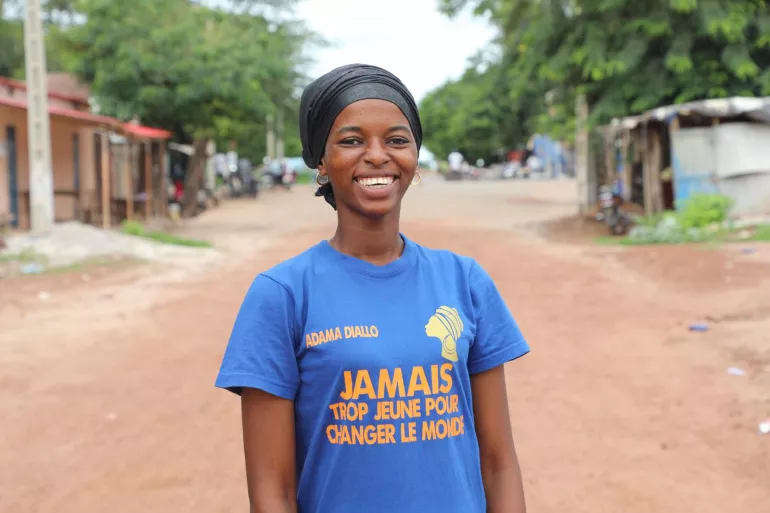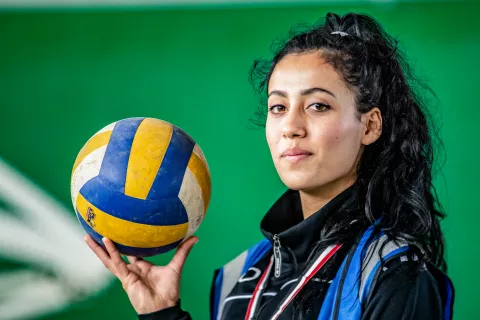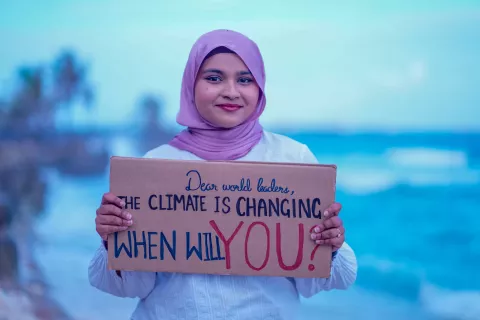Ten years ago, the United Nations General Assembly passed a resolution adopting 11th October 2012 as the inaugural International Day of Girl. It’s easy to overlook now, but this was the result of sustained advocacy from civil society organizations, governments, and girls themselves. Girls’ rights were previously sidelined, their voices muffled.
The International Day of the Girl, or IDG as it’s known to many, is an achievement. It has since rallied the international community around core themes that spark greater investments and attention to girls’ rights. Today there are fewer girls out of school, fewer girls with HIV and fewer girls married before age 18, compared to a decade ago.
Girls’ voices are increasingly part of global dialogues, and key powerbrokers within countries and communities are paying more attention to issues that matter most to girls. Rightly so. Today’s 600 million adolescent girls are the largest number the world has ever seen, and they are current and future leaders.1
One such leader is 16-year-old scientist, STEM advocate for girls, TIME Kid of the Year and UNICEF Youth Advocate, Gitanjali Rao: “Our generation is growing up in places where we’re seeing problems that have never existed before. We bring a new perspective to the playing field … we can help solve global problems.”
Indeed, she can. And millions of other girls, too. We believe in the potential, the leadership, and the agency of all girls.
This year’s theme – Our Time is Now: Our Rights, Our Future – acknowledges that while we’ve achieved progress with and for girls since the first IDG, the gains have been uneven. Far fewer girls marry today than 10 years ago, but one in five young women are still married before their 18th birthday globally. Shockingly, three million more girls of primary school age are out of school today than ten years ago. It shouldn’t be the case that six times more adolescent girls are newly infected with HIV compared to boys in sub-Saharan Africa. Or that thirty per cent of girls in 31 countries experience female genital mutilation.2

We also couldn’t foresee the global COVID-19 pandemic, the number and intensity of conflicts and natural disasters, or the snail-paced response to the impacts of climate change. Each of these exacerbates girls’ vulnerabilities, exposes them to new risks, and for millions of girls, further disrupts their access to quality healthcare, sanitation, education, and nutrition. During the COVID-19 pandemic, a UN Women study found that 1 in 2 women reported experiencing or knowing someone who experienced violence, with increased concerns of safety among younger ages.3
So, the IDG 10th anniversary is an opportunity to reflect on our progress while emphasizing the imperative to do more. We need partners who invest and direct resources to girl-led solutions. Greater precision in system-level policy and programming can secure girls’ rights at the scale they rightly deserve. We require much greater championing of shifting norms and power dynamics for and with girls and their communities that continue to impact girls’ health and livelihoods.
When we do that, the results speak for themselves. Through UN Women’s partnership with the United States President’s Emergency Plan for AIDS Relief (PEPFAR), nearly 200 young women leaders across 15 sub-Saharan African countries have increased their leadership capacities, accessed mentorship opportunities, and directly engaged with established women leaders and decision-makers to demand young women's access to life-saving HIV services.
As Tanyaradzwa Makotore, a programme participant from Zimbabwe, notes: “Before the programme I was shy, I had not realized the full potential of my voice in terms of empowering adolescent young girls around gender-based violence, child marriage and gender-based norms. I’m now more determined to become one of the most impactful women in my country.”
The stakes are high. We are miles from achieving our collective Sustainable Development Goals including achieving gender equality and the empowerment of women and girls (Goal 5). This can change. We have eight years to make up ground. Fortunately, the actions we take can be informed, evidence-based and cost-effective. We know targeted investments make a difference.
Through the Child Marriage Learning Partners Consortium, funded by the Bill & Melinda Gates Foundation, new partnerships and evidence to end child, early, and forced marriage emerged. These and other investments are yielding significant returns. When we address the barriers to girls’ education, for example, through gender-transformative education policies and social protection schemes, there are widespread ripple effects for the girls, their families, and their communities. When adolescent girls complete their secondary education—tens of millions currently do not—the added financial value to economies globally is estimated to range between US$15 trillion and US$30 trillion.4
That’s why this year matters. Girls deserve better—the world deserves better. This year’s theme puts the international community on notice. It calls upon us to do better collectively. Because if anniversaries are normally associated with celebration, this year is a wake-up call to refocus attention on girls and their solutions. In eight years, when the SDG deadline arrives, it should be girls, not us, calling us to support their rights and their future.
Our Time is Now: Our Rights, Our Future.
In solidarity.
About the authors
Yvette Efevbera - Advisor - Gender-Based Violence and Child Marriage - Gender Equality Division, Bill & Melinda Gates Foundation
Sarah Hendriks - Director - Policy, Programme, and Intergovernmental Division, UN Women
Lauren Rumble - Associate Director - Gender Equality, UNICEF





